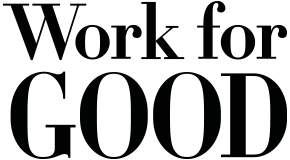Resume trends: Could you use an assist from TikTok or Elle Woods?
(Image: Amanda Vick)
Despite years of disruption in the workplace and the job market, the resume has remained pretty much a constant. For decades, common knowledge has had the resume pegged to a minimalist, single-page standard. So how is that standard holding up now?
At this moment, resume trends are being determined by two major factors: the technology now available for jobseekers to communicate their skills, and the automated screening software increasingly being used by employers.
With that in mind, here’s a closer look at some of the latest resume trends, considering why they may or may not work for you when applying for a position in the cause-based sector.
The video resume
The current trend toward video resumes is being fueled by TikTok, the video-sharing platform popularized by Gen Z that operates a bit like a mash-up of YouTube and Twitter.
TikTok has always been primarily about entertainment, but users have also successfully adapted it as a mouthpiece for political activism and as a job search tool. What began informally with the hashtag #CareerTok caught the interest of TikTok’s head of global marketing, Nick Tran, who turned it into an official pilot program with 40 employers signed up to accept job applications through the app. As CNBC reports, Tran believes TikTok resumes encourage young jobseekers to “show off their skills and creativity in a way that the written word simply can’t.”
Top-performing video resumes break from the standard – in video terms, a monologue of achievements – to show job applicants in a variety of environments, using multiple video editing techniques (from graphic stickers to music), to share the applicant’s story.
For tech-savvy, design-oriented jobseekers, this approach can be simpler and much more satisfying than formatting a list of educational and workplace experiences. For positions that require social media know-how, video editing skills, and storytelling ability – think development, marketing, and communications – it can be a highly effective way to demonstrate your expertise.
However, there are some distinct caveats:
- Hiring managers may prefer traditional resumes that they can scan.
- Applicant tracking system (ATS) programs that identify keywords in resumes can’t process a video at all.
- Showcasing your identity may open the door to bias (conscious or unconscious) in the hiring process.
- Even following an excellent video, a recruiter might be left wondering about essential skills.
The beautiful resume
Another trend is to make the traditional resume more aesthetically pleasing. This trend might be traced twenty years back to a scene from modern classic Legally Blonde, where Reese Witherspoon’s character Elle Woods hands her resume to a Harvard professor. Looking puzzled, he points out that it’s pink; Elle responds, “And scented. I think it gives it a little something extra.”
Free online design tools now make it simple to add that “little something extra.” Canva, in particular, has a variety of resume templates, and uses an intuitive drag-and-drop interface for adding graphic elements that make a page pop.
Unfortunately, it may be twenty years too late to be of real use: Unless you’re submitting them by hand, a resume designed using a site like Canva is likely to get booted from the queue by ATS software before a hiring manager ever sees it. As TopResume explains, ATS have a hard time reading complex fonts, while images and charts become “a garbled mess.”
Applying for a position heavy in graphic design? Set up a web-based portfolio to showcase your talent. For most other fields, a clearly-articulated skill set stands out more than a beautiful resume.
The long resume
So what will work with ATS? The kind that includes the most keywords. That’s where the “long” resume comes in.
The single-page resume standard has reigned supreme for so long because hiring managers, reviewing resumes by hand, found it difficult to scan longer documents. With ATS doing the initial scanning, the priority is keywords rather than brevity: The more keywords you can include, the better. Just be sure to include them organically, or else you will be flagged for spamming the system.
Provided that your resume highlights your legitimate work experience, HR actually favors longer, more detailed resumes selected by ATS. According to ResumeGo research, “recruiters are 2.3 times more likely to prefer a two-page resume over a one-page resume,” regardless of the applicant's job level.
The verdict
Generally speaking, detail-oriented, two-page resumes that utilize simple fonts and a basic design perform best, and will continue to perform as ATS software becomes more popular. Going forward, this should likely be considered “the new standard.” A longer resume doesn’t just help in the ATS scan, it provides decision-makers with a more dynamic and complete summary of your ongoing career, academic achievements, and volunteer experiences.
However, if you’ve attempted this and come up empty-handed, it’s easier than ever to give one of the more creative trending formats a try.
Kelli Karanovich is an editor at Work for Good, as well as a professional copywriter and educator who also publishes as Kelli Lynn Grey.
Marc Schultz is communications editor at Work for Good.



